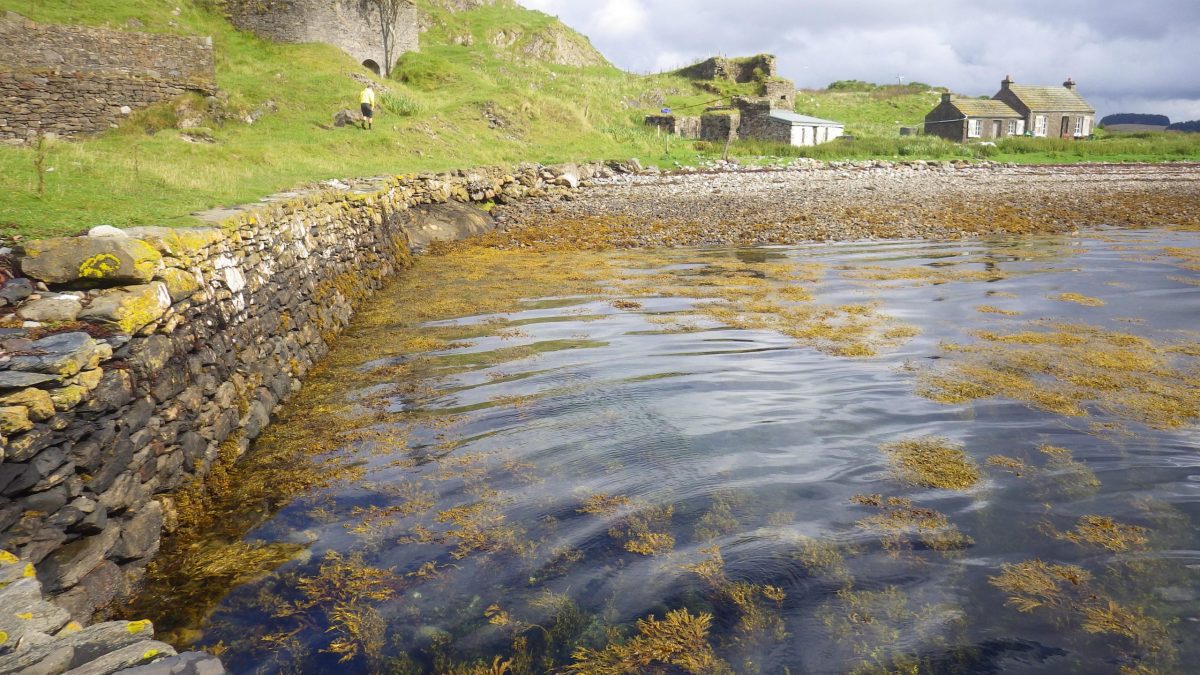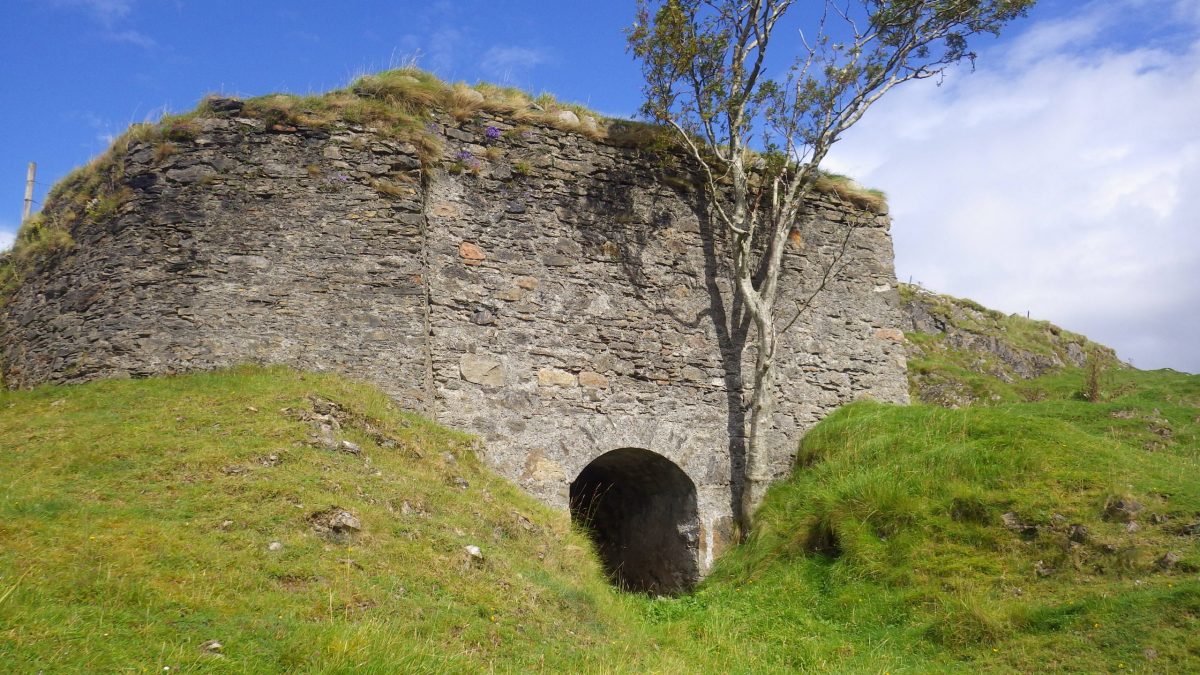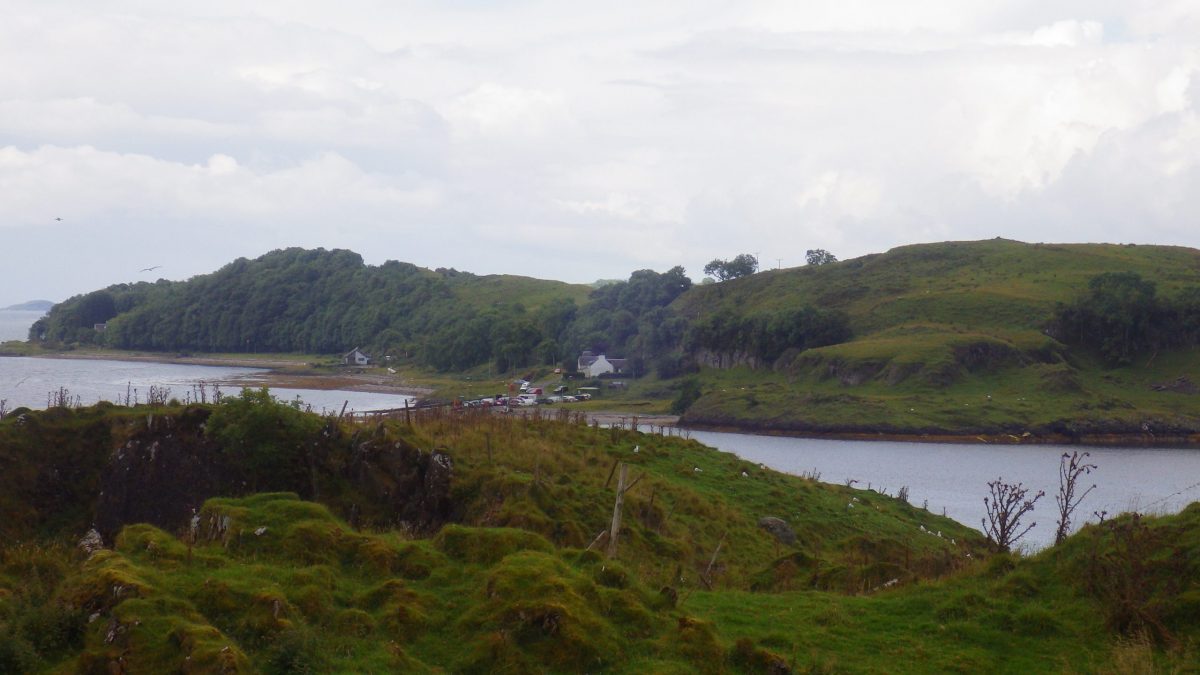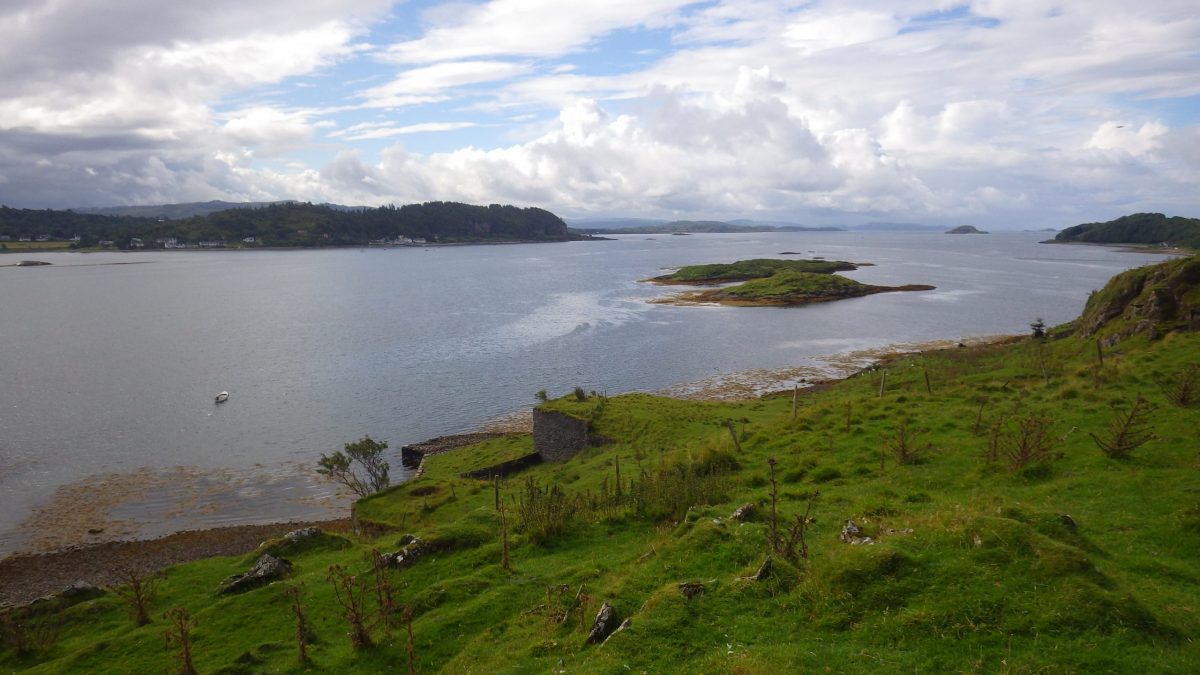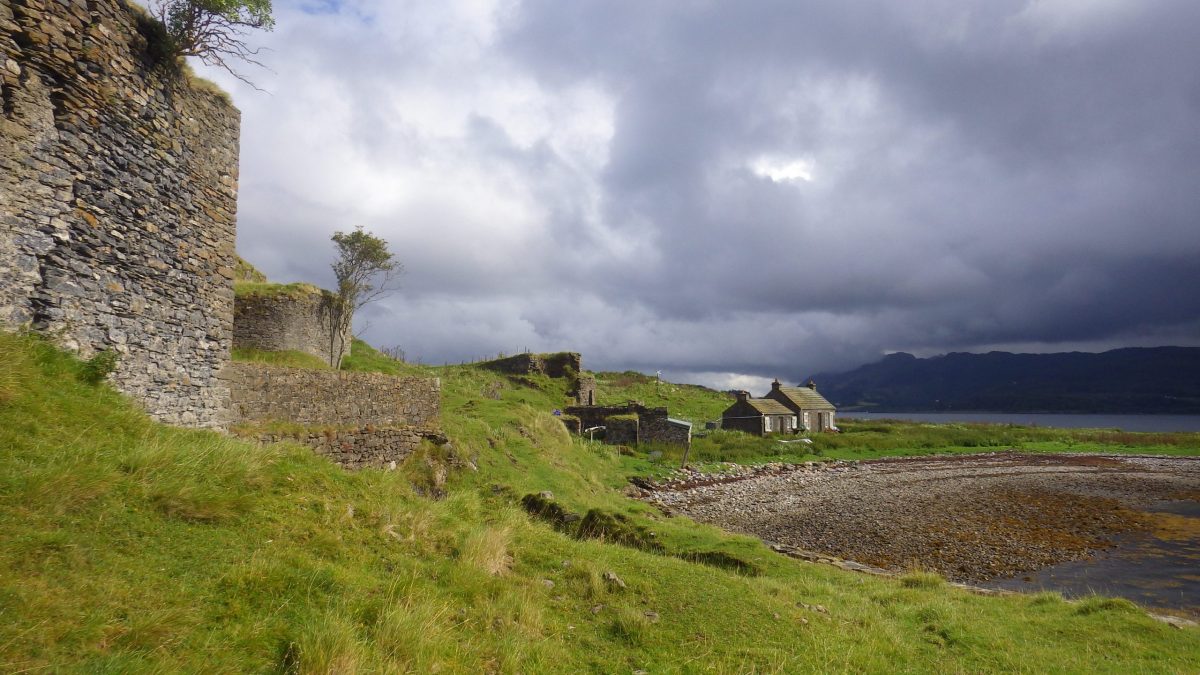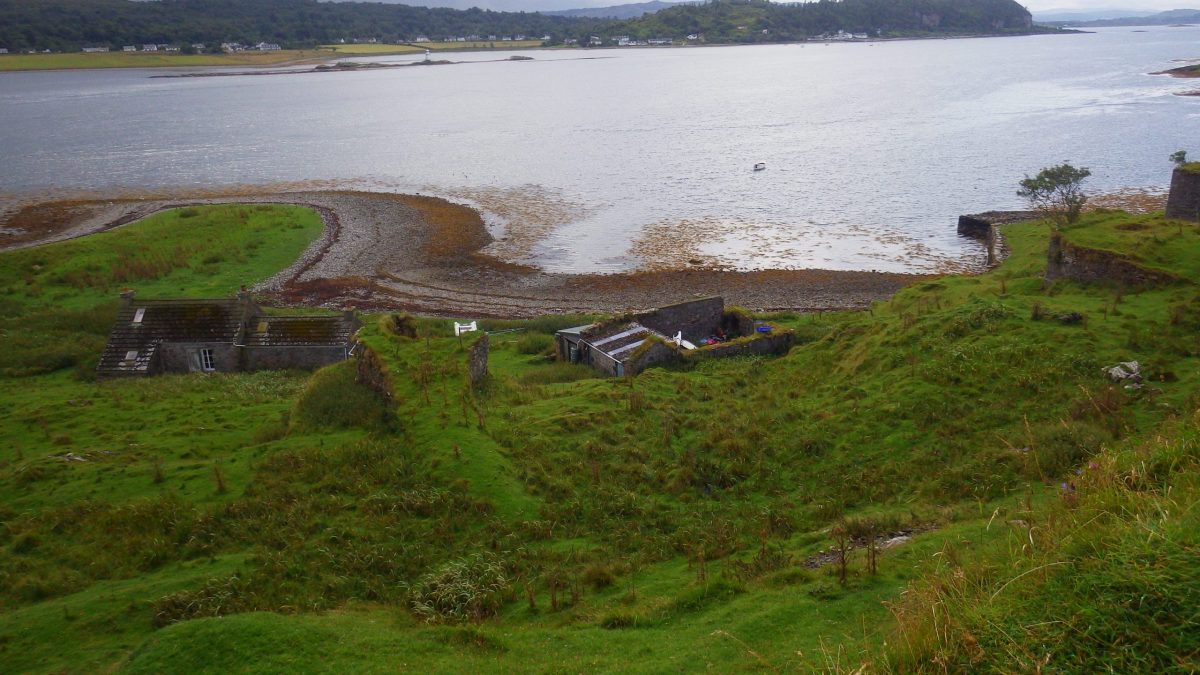Introduction
Eilean nan Caorach, Sheep Island with an industrial history, lime kilns and a perfect hideaway.
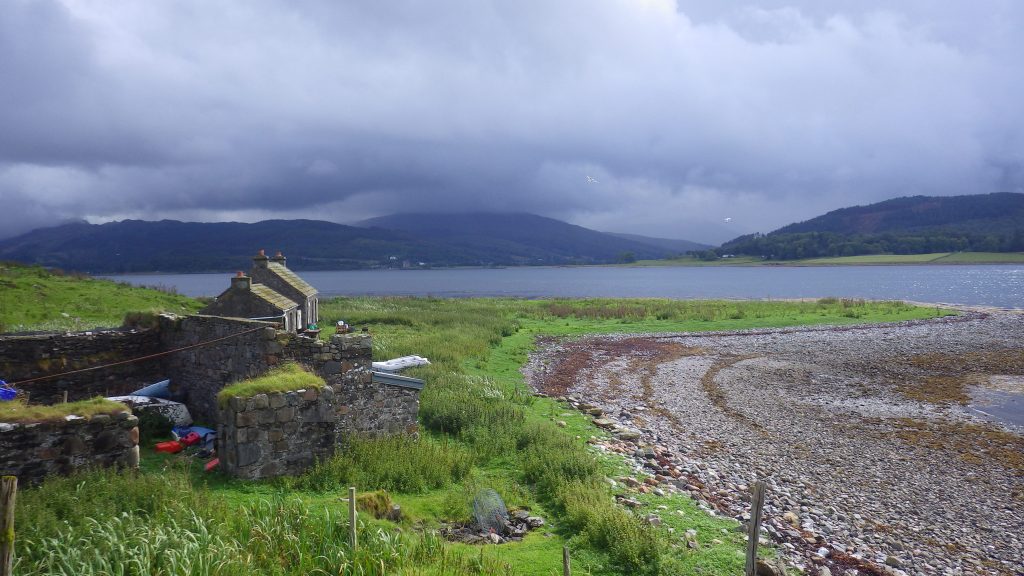
Location
Information
Sheep Island Eilean nan Caorach Appin
Eilean nan Caorach Appin is the classic type of little Scottish island I have sailed past on numerous occasions. Passing and never having stopped to appreciate the history and story that it has to tell. This little Scottish island is situated at the north end of Lismore. It is no more than 1 mile away from the mainland across the Lyn of Lorn and stands at a mere 30 m high.
In July 2017 Willie Gibson and I set foot on the island. We landed from the western side to steep rock face with heather and bracken growing further up the slopes. With the dinghy secured we made a straight line for the summit. The route, through heavy bracken and heather soon gave way to smooth grazed grasslands. The smooth terrain was a joy to run on. It was no more than five minutes later when we topped out and enjoyed the uninterrupted views. The grazing sheep totally ignored us, the seagulls squawked noisily, the latter certainly not caring for our presence on their island.
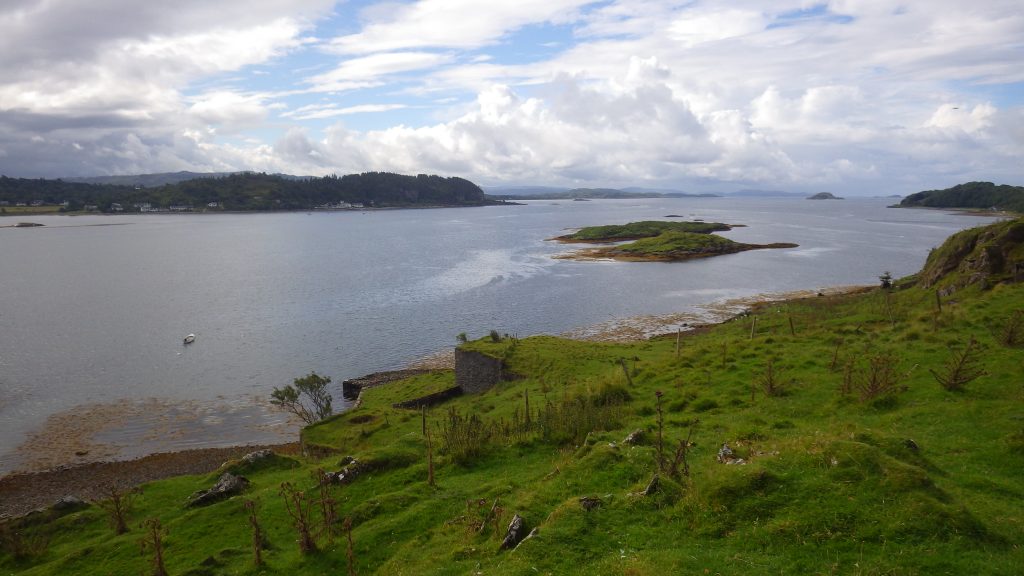
Industrial History
Eilean na Caorach ‘Sheep Island’ immediately declares its hand as having been a grazing pasture. Conveniently placed for farmers from either across on the mainland or from the neighbouring island of Lismore. However, the island took on an industrial phase when the value and method of extraction of the its rich lime deposits could be fully realised.
For over 100 years from 1800 limestone, or the processed material Quicklime, was extracted from this little island. This island like many in the area is rich with limestone. The process involved firstly the hard graft of digging it out by hand from the hills. The rock was dropped into the lit kilns where it would roast and toast, ending up as quicklime. Quicklime was used for farming and building purposes. The kilns were fired by coal brought from the mainland with the boats returning laden with quicklime.
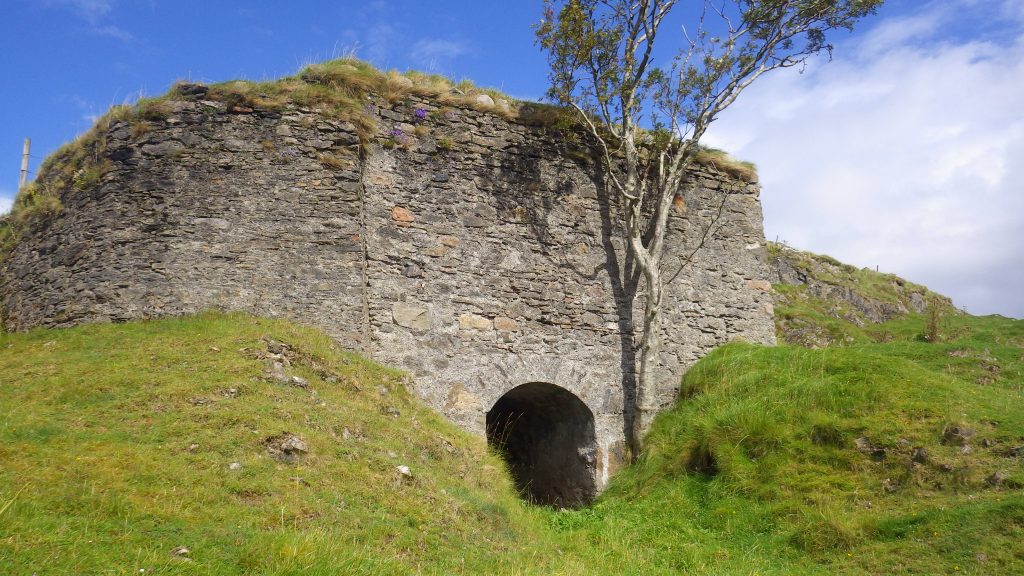
The assortment of stores, outhouses and buildings tell a story of its industrial past. Times have changed and the ‘workers’ stone cottage has been recently refurbished and is now let out as a self catering unit. If you wish to rent a cottage on an island and be on your own and be the only resident, this is the place for you. We did feel slightly guilty as we climbed up the hill. Our movements causing the would-be deserted island tenants to make a quick retreat back to the cottage. Undeterred we climbed on and enjoyed the views in the knowledge that we would be gone from their island idyll in a few minutes and off to our next island of the day.
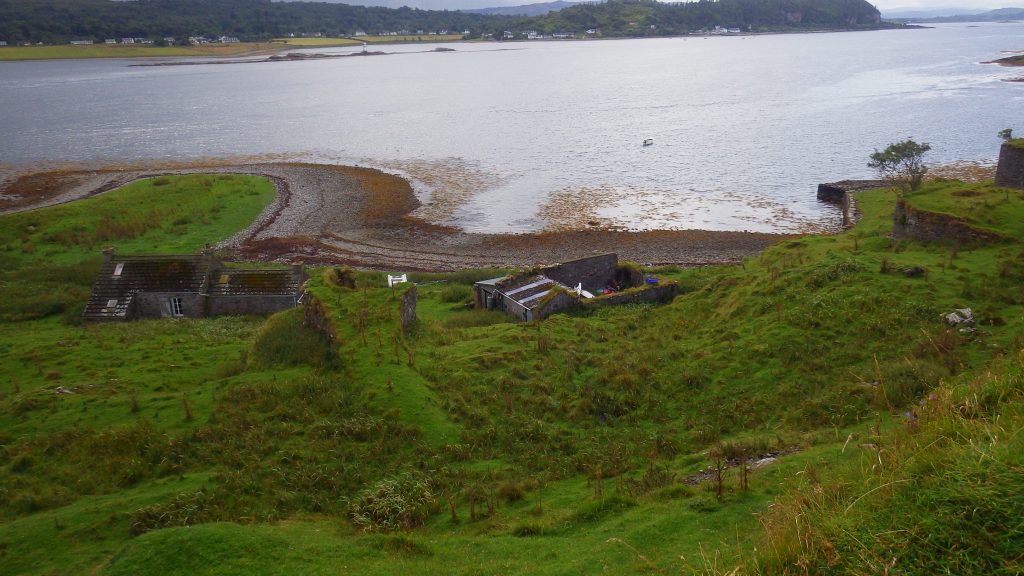
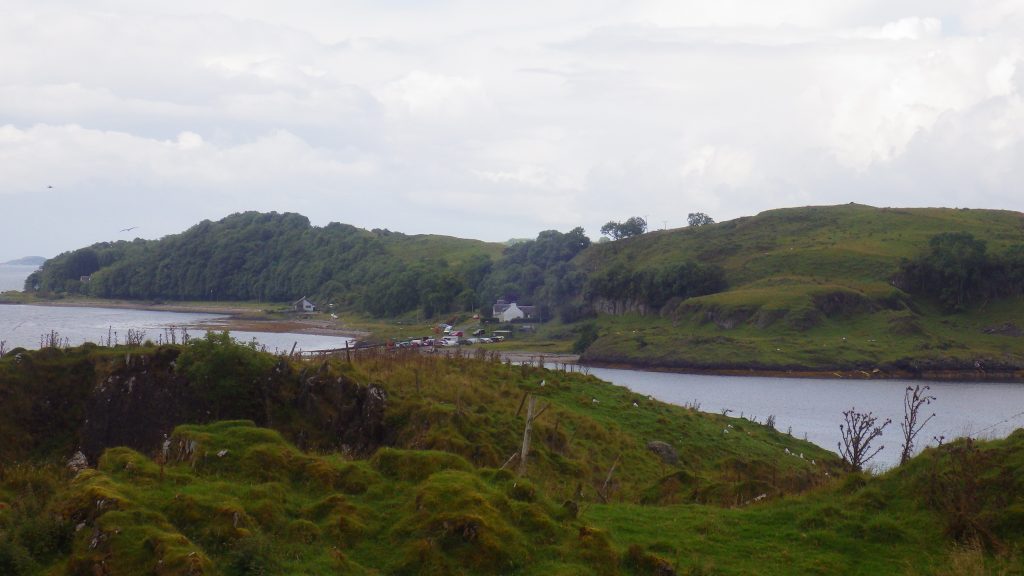
Summit reached
Summit done we came back down to the eastern beach. From there we had a good explore of the kilns and remnants of what must have been a low harbour wall. The harbour took flat bottomed boats that dried out at low tide and from there been loaded with their valuable export to the mainland.
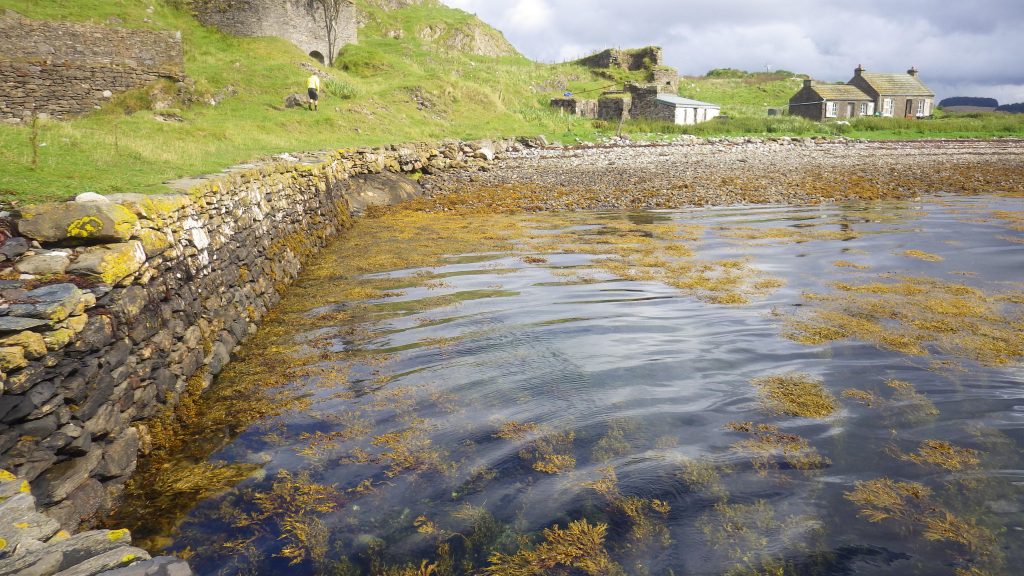
Willie and I retraced our footsteps back to the steep drop down to the dinghy and paddled our way back out the Richard on Nordic Fulmar. Another remote Scottish island visited, summited and appreciated.

